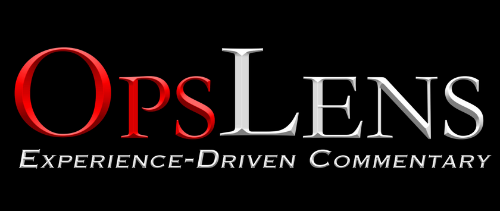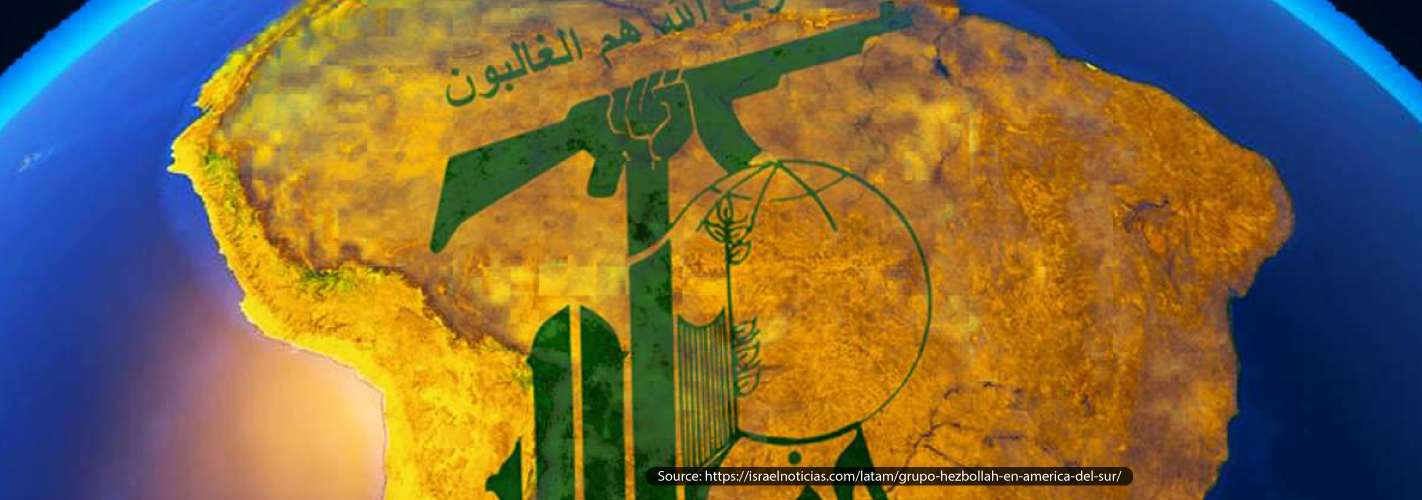“Hezbollah, an indispensable ally to the world’s most notorious cartels, an existential threat to the U.S. national security, and an entity that combines radical terrorism with narco-terrorism.”
U.S. national security has never been under such pressure from adversaries and terror groups threatening the nation’s safety domestically and abroad. For more than three decades, the successive U.S. administrations, the intelligence community, and law enforcement agencies have been overwhelmed by the ongoing threats posed by radical groups and terrorist organizations. Terrorist organizations such as al-Qaeda (AQ), the Islamic State (IS), Iranian affiliated Shiite militias, and the ramifications of the regional conflicts in the Middle East and North Africa are the major threats facing the U.S. presence, interests, and strategic alliances regionally and internationally. However, Hezbollah’s growing influence in South America poses a more concerning threat to the U.S. national security domestically.
Hezbollah is one of the world’s most sophisticated crime groups, not only a well trained and equipped militia, but an entity that is organizationally structured to operate through separate networks of highly-capable entities actively engaged in massive clandestine operations, intelligence activities, diplomatic relations, business development, global investments, and industrial activities all over the world. Iran represents the backbone of Hezbollah, in addition to the organization’s widely ramified activities and financial recourses. Today, Iraq and Syria are the organization’s largest trading zones and the primary sources of cash flow generated from cross-border smuggling of weapons, petroleum products, antiquities, in addition to drugs and human trafficking operations.
However, Hezbollah’s presence is not limited to the Middle East. South America has become the largest site for Hezbollah’s commercial activities, investments, money laundering, engaging in specific immigration hoaxes, and obtaining residency/citizenship bona fides for the organization’s members and operatives. The organization has also been actively involved in major international contraband and weapons smuggling and trafficking.
The U.S. intelligence community and law enforcement agencies have long been concerned about the severe threats emanating from Hezbollah and other terrorist groups’ ability to establish safe havens and, eventually, staging grounds to conduct covert operations and target the U.S. national security in the homeland. Nevertheless, the U.S. government focused on the potential threat posed by Hezbollah’s operatives across the borders and missed the serious threat Hezbollah poses on American society and homeland security; the “Narco-Terrorism.” The Anti-American slogan raised by the Iranian regime and proxies, “Death to America,” is being systematically applied on a daily basis across the borders of the United States and from there to American society.
Hezbollah’s Activities in South America
The Iranian-backed organization, Hezbollah, is progressively expanding its network through Venezuela, Colombia, Brazil, Argentina, and Paraguay, while on the Mexican side, the rivalry between Hezbollah’s agents and smaller pro-ISIS groups and other radical groups are on the increase to strengthen the strategic partnership with influential drug cartels.
It is critically important to realize that prior to 9/11, Hezbollah had caused more American deaths than any other terrorist group. Hezbollah poses a critical threat to U.S. national security. The Iranian-sponsored Lebanese group, Hezbollah, has been linked to a series of terrorist attacks against U.S. facilities, such as the bombing of the U.S. Embassy in Beirut and the U.S. Marine Barracks in 1983, in addition to the organization’s recent role in targeting U.S. installations, and the diplomatic mission in Iraq.
Hezbollah’s network is operationally active in South America. The network (Hezbollah) is heavily engaged in expanding the organization’s financial resources, recruiting operatives, and forming alliances with hostile regimes and criminal groups to undermine U.S. safety and security. The rapidly growing nexus between international terror networks and Narcoterrorism groups throughout South America is a new challenge facing U.S. intelligence and counterterrorism institutions.
Hezbollah counts extensively on Lebanese communities in South America with “sanitizing” the organization’s finances and redirecting the revenues through a network of private businesses, religious entities, charity, and donation foundations, as well as imposing taxes and other illegal means such as weapons and drug smuggling, as well as human trafficking.
This is just an added challenge, a new field that the U.S. government, the intelligence community, and law enforcement agencies have to experience and deal with all along the line. As the situation in the Middle East continues to aggravate, Iranian proxies will transition to a different battleground and begin to disrupt the U.S. operational procedures and response protocols.
Hezbollah’s Expansion
Hezbollah’s presence also extends within the United States and Canada. Hezbollah’s supporters, sympathizers, and facilitators are present in the forms of active and sleeper cells in many major cities in the United States and Canada. These networks’ activities are not limited to fund-raising and logistics; it goes beyond that to an advanced operational capacity to identify targets, conduct covert observation (surveillance), provide timely and actionable intelligence, mobilize agents of influence, and facilitate covert operations.
“Hezbollah’s strategic presence in North America has outperformed all other terrorist groups, including al-Qaeda and ISIS.”
The U.S. government and law enforcement agencies are well aware of Hezbollah’s existence both organizationally and in the forms of grassroots all over the United States and Canada. The organization’s activities are not limited to fund-raising and money laundering; it also has the operational capacity and capability to act as agents of influence, or to launch hostile operations in any event, especially under intense political or military circumstances that may be imposed by foreign policy necessities or national security needs.
Mitigating the risks and the threat Hezbollah poses requires a great deal of cooperation and operational consistency between the different members of the U.S. intelligence community (IC) and other regional and international allies. Hezbollah’s phenomenon must be thoroughly and appropriately examined, recognized, and acknowledged in order to designate Hezbollah’s model as a hostile and terrorist organization and a Narco-Terrorist organization as well.
Hezbollah’s Activities in West Africa
Hezbollah has reshaped the group’s organizational structure, turning Lebanon into a Narco-State and one of the world’s most dynamic production spots for the amphetamine-based drug Captagon. Hezbollah’s Captagon joint-production from their Syrian territories only is estimated annually at ($1 Billion), not to mention other facilities in the southern part of Lebanon, particularly in Hezbollah’s strongholds Beqaa valley, and other distribution and logistical support measures that are sponsored by the Iranian-linked militias in Iraq, specifically in Basra province.
Logistically, Hezbollah has expanded the transportation (smuggling) strategies in order to facilitate the mobility of the drugs and the money laundry campaigns exploiting the organization’s (Hezbollah) connections and influence over the remarkably distributed Lebanese diaspora. Africa in general, and West Africa in particular, have become another geo-strategic territory for Hezbollah to utilize as a logistical hub and an alternative route to avoid detection by hiding the drug shipments’ original point of production (Syria and Lebanon). Although the largest Lebanese population in West Africa has settled in Côte d’Ivoire (Ivory Coast) over the past decades, Hezbollah’s presence and heavy commercial activities have been noticeably concentrated in the Republics of Benin, Gambia, and Guinea.
In addition to the fact that Hezbollah has utilized West Africa as a logistical hub for transportation and smuggling activities, The West African markets have gained a reputation as “sanitization stations,” especially after the rapid growth in Hezbollah’s wealth. Certain countries in West Africa are considered major markets to facilitate the money laundering activities for Hezbollah’s wealth estimated in billions of dollars from the cocaine business in South America. The enormous revenues from the Narco-Trade in South America provided the group (Hezbollah) with a well-established position among major cartel organizations. Therefore, it was critically vital for the organization (Hezbollah) to have a mechanism to re-route the revenues back into the Middle East, including the return of capital (ROC) and the capital gain that belongs to the principal investor, Iran.
Motives and Objectives
The Iranian regime realizes that any interruption or disagreement that may occur during the course of the nuclear program negotiations could jeopardize Iranian mobility, isolate the country regionally and internationally, and severely damage the Iranian economy. Therefore the Iranian regime is determined to maintain international relations with certain countries that have the capacity to provide Iran with access to critical resources and materials such as raw uranium, through strategic allies such as Venezuela, in addition to the shared political orientation resembled by the anti-American alliance. Hezbollah remains the main element and the exclusive facilitator in this equation.
Hezbollah’s Operational Security
Counterintelligence is another area that Hezbollah is well versed in, and for decades, the organization has maintained its internal and operational security at remarkably high levels. Hezbollah’s elite counter-intelligence officers and counter-espionage specialists have been trained by highly specialized experts of Iran’s intelligence institutions and private entities operated by former members of the former Soviet intelligence networks. It is not a secret that Hezbollah’s Counterintelligence (CI) and counter-espionage (CE) expertise have been tested devastatingly against both the Israeli and U.S. Intelligence over the years.
During the past decades, the intelligence efforts have resulted in remarkable progress to breakthrough, infiltrate and cause internal damage (Destruction From Within) to the notorious Hezbollah organization. However, the failure rates that resulted from failed operations, blowbacks, and inconsistency in operational security (OPSEC) were way higher than the progress levels.
The Popularization of Tehran-Hezbollah Model
The Iranian – Hezbollah model has become by far the world’s most popular, imitated, and a globalized criminal and terrorist organization. Hezbollah is Iran’s most effective and influential proxy both regionally and globally. Hezbollah is ideologically, doctrinally, and intellectually subordinated to the doctrine of “Wilayat al-Faqih”; known as “The Guardianship of the Islamic Jurist,” in Iran. Iran is the absolute backbone of Hezbollah, and Hezbollah is Iran’s iron fist regionally and internationally.
The advanced positions Hezbollah has established in South America, plus the covert presence of the group inside the United States and parts of Canada, could potentially become a serious threat to U.S. national security directly. The Iranian regime and proxies such as Hezbollah and other Iranian-sponsored factions in Lebanon, Syria, Iraq, Yemen, and parts of Africa continue to run millions of dollars worth of weapons smuggling operations and drug trafficking all over the Middle East and North Africa region. Iran and its militias continue to destabilize regional security, threatening the sovereignty of independent states, fueling sectarian wars, and capitalizing on the narcotics trade to fund terrorism, influence campaigns, and geo-strategic territorial dominance.
The threat is expanding and no longer contained at the Middle East and North African regional level. However, it has gone beyond that to the point where the threat has reached advanced positions on the borders of the American continent to the North and South. If the persistence of this model is not put to an end, and the extension is not curbed, we are close to turning into a free ground for terrorist groups and drug kingdoms.
This assessment is not an unjustified fear, nor a rumor to intimidate society, nor is it a promotion for a new war or a lobbying effort for political interest. It is a fact, an unpleasant reality that other countries and nations have witnessed and experienced the hard way, it is the future of the nation’s safety, and the fate of U.S. national security that is being unremittingly targeted by adversaries every single moment.

















